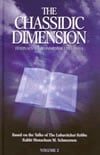The Torah portion of Chukas tells of Miriam’s passing.1 Immediately afterward,2 the verse goes on to say that “the people did not have any water.”
The Gemara3 explains that the two events were related, for the Jewish people had water in Miriam’s merit. With her passing, Miriam’s Well ceased to flow. It subsequently returned in the merit of Moshe and Aharon.
The Gemara also states that the Clouds of Glory which surrounded and protected the Jewish people in the desert were in the merit of Aharon, while the Manna was provided for them in the merit of Moshe. With the passing of Aharon (related as well in Chukas) the Clouds of Glory ceased. They returned in the merit of Moshe.
What is the relationship between the Manna and Moshe, the Clouds of Glory and Aharon, and the Well and Miriam?
All three miracles have an association with Torah. The Clouds of Glory protected the Jews from the ill winds, snakes and scorpions found in the desert. They also smoothed out mountains4 and laundered the nation’s clothing, as the verse testifies:5 “your garments did not wear out.”
The manna was of course eaten, with the taste being whatever the person desired.6 The well provided water, something that in itself does not provide nourishment,7 but distributes the nourishment which food provides to all parts of the body.
Torah also contains these three elements. It sustains the Jew in an internal way, and protects in an external fashion. And there is an element that diffuses the first two aspects to all Jews.
That Manna -like aspect of Torah that is internal — such as the comprehension of it — affects each Jew according to his or her personality, intellect and spiritual capacity. The Cloud-like aspect that is external — such as the revelation of the soul’s essence that it can engender in times of crisis, for example — affects all Jews equally.
The aspect of water in Torah — that which descends from on high8 — diffuses both the internal and external aspects within all Jews.
The relationship between the manna and Moshe, the Clouds of Glory and Aharon, and the well and Miriam, will be understood accordingly.
Moshe was the Jews’ shepherd, guiding each according to his particular level. This is similar to what the Midrash9 relates about Moshe herding actual sheep: When he grazed the flock, he made sure that the young lambs had softer grass.
The reason Moshe acted in this manner is because the provision of sustenance must be tailored to the needs of each individual. Thus the manna , a food that served the internal needs of each Jew, descended in the merit of Moshe.
Aharon was known for his “love of creatures,”10 i.e., he loved even those people whose most flattering appellation was that even they are G‑d’s creatures. By loving them all, he was able to engender within them a desire to perform mitzvos,11 although these people harbored no such desires on their own.
The Clouds of Glory therefore appeared in the merit of Aharon. For all things come about “measure for measure.”12 Since Aharon loved all creatures without differentiating, he drew down the Clouds of Glory in his merit.
While still in Egypt, Miriam devoted herself to the small children. Her heroic and self-sacrificing efforts negated Pharaoh’s evil decree, and prepared the generation to say:13 “This is my G‑d and I shall glorify Him.”14
So it was in her merit that the Jewish people had water to drink, as water symbolizes the ability of Torah to descend even to those whose level puts them “at the outskirts of the community.”
Based on Likkutei Sichos, Vol. II, pp. 331-336.








Join the Discussion